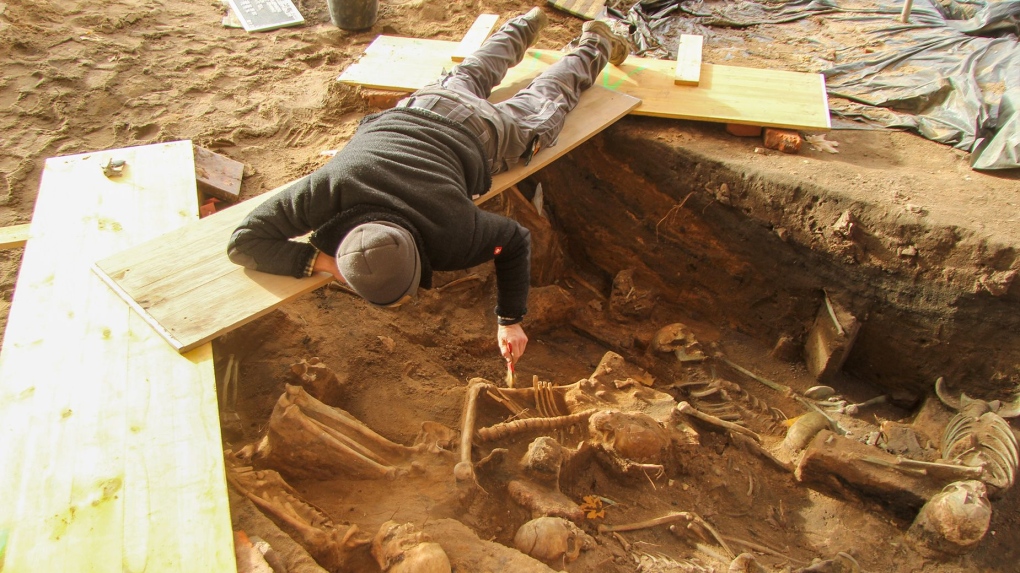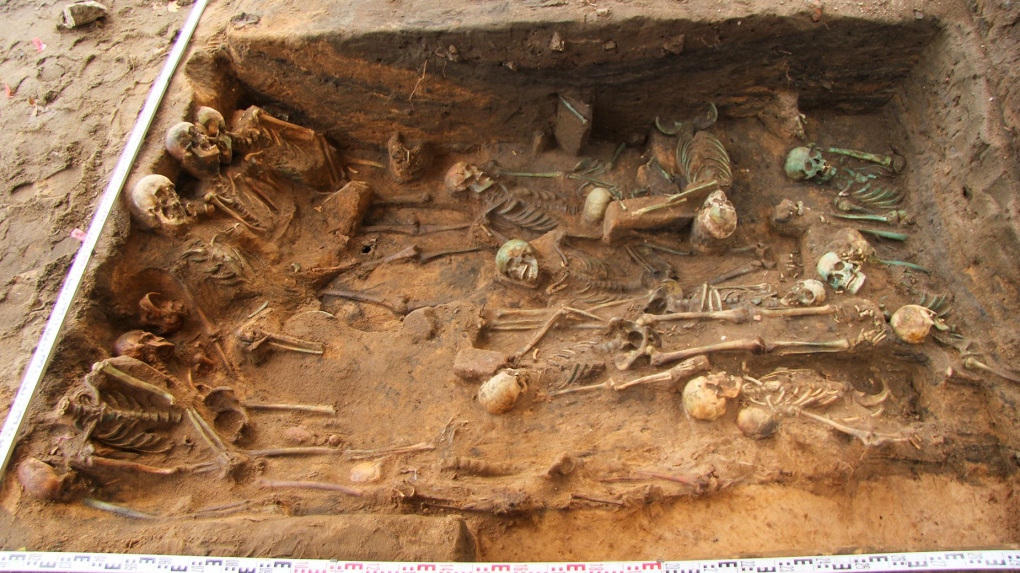
A mass grave containing hundreds of plague victims was found in Germany
Archaeologists have excavated a mass grave in Germany containing the remains of hundreds of people who died during the Black Death plague that ravaged Europe in the 14th century.
The mass grave is located in the center of the city of Nuremberg. The grave is thought to contain 1,500 skeletons. So far, 1,000 skeletons have been exhumed.
Melanie Langbein, from Nuremberg’s department for heritage conservation, told CNN that eight plague pits were identified, each containing several hundred bodies.
“Those people were not interred in a regular cemetery although we have designated plague cemeteries in Nuremberg,” said Langbein.
📣 Our WhatsApp channel is now LIVE! Stay up-to-date with the latest news and updates, just click here to follow us on WhatsApp and never miss a thing!!
“This means a large number of dead people who needed to be buried in a short time frame without regard to Christian burial practices,” she said.

Radiocarbon dating is being used to accurately date the mass grave. Archaeologists have found pottery and coin fragments along with the skeletons.
Langbein discovered a note from 1634 about a plague epidemic that killed more than 15,000 people in 1632-1633, which was found in St. Petersburg, where the current excavation took place. Sebastian said about 2,000 people were buried near Spital.
“We can explore the size and demographics of the city with statistical tools, the same tools that a modern census team would with a new population,” Julian Decker, who led the excavation on behalf of the company In Terra Veritas, told CNN, including the percentage of children and adults, women and men, and overall health.
Langbein stated that the next step is to complete the excavation, as well as to clean and analyze the bone material. He also added that they will collaborate with institutions interested in specific aspects of the findings, including analyzing the plague genome and researching parasite eggs in the soil.
Cover Photo: In Terra Veritas via CNN Newsource
You may also like
- A 1700-year-old statue of Pan unearthed during the excavations at Polyeuktos in İstanbul
- The granary was found in the ancient city of Sebaste, founded by the first Roman emperor Augustus
- Donalar Kale Kapı Rock Tomb or Donalar Rock Tomb
- Theater emerges as works continue in ancient city of Perinthos
- Urartian King Argishti’s bronze shield revealed the name of an unknown country
- The religious center of Lycia, the ancient city of Letoon
- Who were the Luwians?
- A new study brings a fresh perspective on the Anatolian origin of the Indo-European languages
- Perhaps the oldest thermal treatment center in the world, which has been in continuous use for 2000 years -Basilica Therma Roman Bath or King’s Daughter-
- The largest synagogue of the ancient world, located in the ancient city of Sardis, is being restored











Leave a Reply